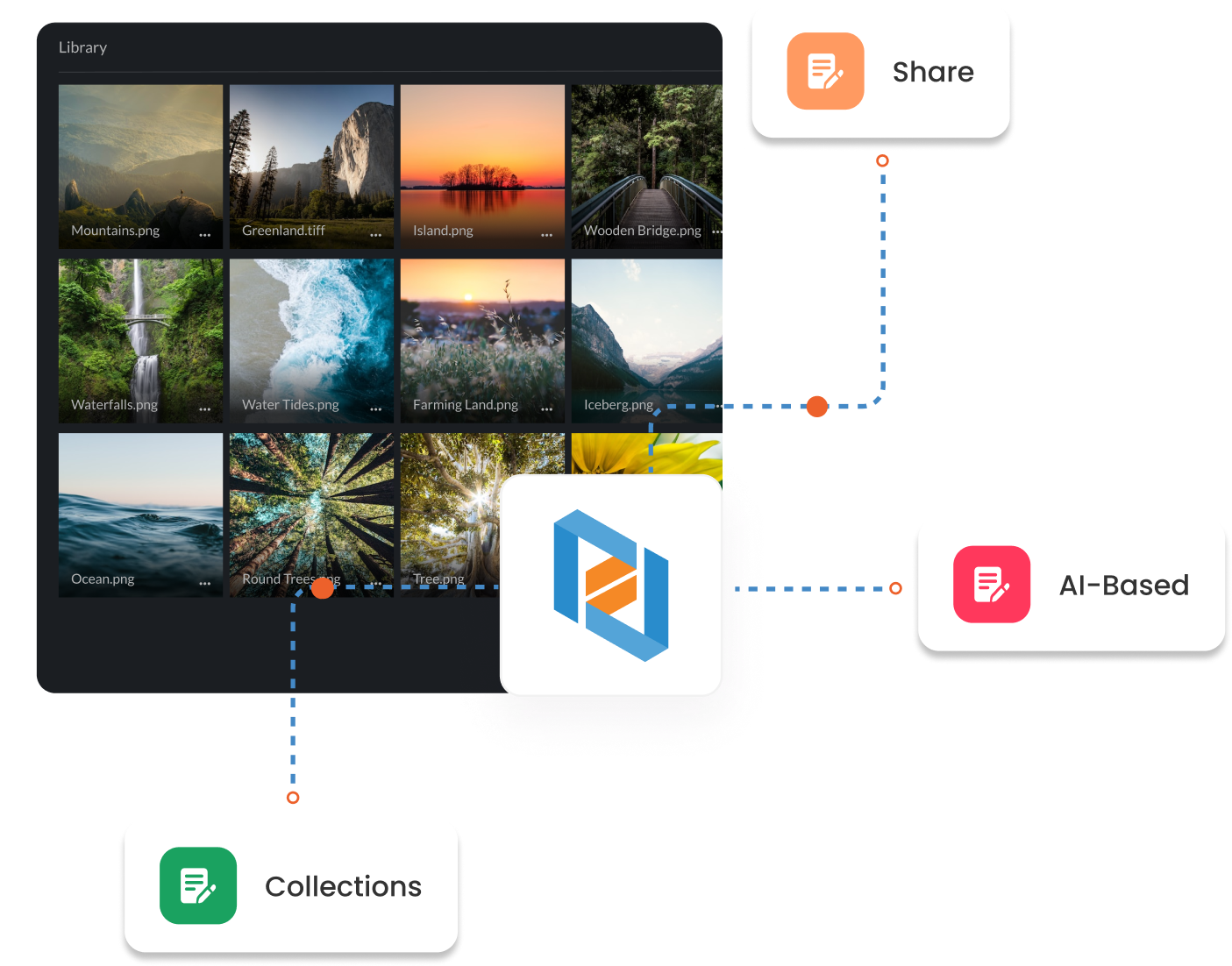Why Every Designer Needs a Digital Management Solution in Their Tech Stack?
Have you ever had to re-create assets or spend valuable hours searching merely because of disorganized asset management? In today's fast-paced world, independent designers and design agencies face one major challenge – efficient management of their creatives. Organizing, sharing, and maintaining large volumes of creatives is challenging. Maintaining brand consistency on collaborative projects is another often-faced challenge for design agencies. The ever-growing bulk of creatives teamed with inefficient asset management is a doom waiting to unfold.
With numerous change requests, it is not uncommon for designers to face difficulty in locating the updated version of an asset or ensuring all client feedback is accounted for in the change requests. These problems can take away a significant share of your productive time, slow you down, and even affect your creativity. While you can bring in numerous stand-alone tools to solve all these, it is easier when you have one tool to rule it all. Enter – Digital Asset Management Solution. A DAM tool can be a one-stop solution for all these challenges while adding substantial efficiency to your creative process.
Organizing assets in a central repository with a collaborative and streamlined workflow can do wonders for you, and a Digital Management Solution is how you achieve it. Incorporating a DAM solution into your tech stack can be immensely beneficial in simplifying the asset management needs of designers and agencies. In this post, we discuss the benefits that designers can unlock by adopting a DAM solution.
Unlock Your Full Potential With The Power Of Dam
Whether you struggle with constantly re-creating assets or manually categorizing creatives, a tailored DAM solution can equip you to optimize your workflow. Designers engage with multiple departments daily, from distributing assets to receiving feedback and changes. Between this and creation, having a centralized solution like DAM can significantly enhance your efficiency.
Systematically Organize Your Assets
Designers work with multiple asset types and file formats, and DAM allows you to effortlessly categorize, locate, and retrieve those files. Organizing assets in structured collections with a metadata schema can enhance your searchability by bounds. Metadata-based searches work like magic, and you can even go beyond the technical metadata and add specifics like keywords, locations, captions, copyright info, and more. Some advanced systems even offer facial recognition-based searches. With DAM's central repository containing structured metadata-powered collections, you have a panoramic view of all the available assets, eliminating unnecessary re-creation.
Seamlesss Collaboration Across Projects
Collaborating on assets while engaging with multiple departments can be challenging without a proper management system. Sharing files through email or other ad-hoc methods leads to version control issues, confusion, and delays. With a DAM solution, you can securely share assets within the system to ensure real-time collaboration on the latest versions. With the version control feature, you can track changes, compare revisions, roll back to previous versions, and maintain a clear audit trail of modifications. This collaborative workflow streamlines communication eliminates errors, and fosters better teamwork.
Streamline a Productive Workflow
Today automations is ubiquitous, and DAM solutions generally come with several built-in automations to improve productivity. From process automations to predefined templates, design components, and asset collections to auto-tagging of assets, DAMs are designed to streamline workflow and enhance efficiency. Offering seamless integration with popular design tools, you can also now effortlessly access assets from preferred software and eliminate context switching.
Ensure Brand Consistency With Every Design
Design agencies often work on multiple projects for various clients, making maintaining brand consistency across various deliverables challenging. The central repository provides an overview of all approved brand assets, so you can always use the correct and up-to-date assets or templates. Brands are pretty particular about their identity and guidelines, and with DAM, you can significantly reduce the risk of brand inconsistencies. Storing approved brand assets, elements, and templates in a centralized location, you can repurpose existing assets and avoid unnecessary re-creation.
Control Access Efficiently
While collaborating on projects, it is essential to manage accessibility. Most DAM systems offer user-and-permission-based rights and permissions that enhance the collaborative experience while maintaining the integrity of the asset. So, you can place usage restrictions, assign permissions to access, edit, comment, and manage any risks of copyright infringement.
Gain Valuable Insight Into Your Assets
With the sheer volume of designs created across multiple projects, having access to insights into the usage, engagement, and user preferences can help designers and agencies optimize design strategies and create more compelling designs.
Design captures the essence of a brand and communicates it to the world. Integrating a DAM system into your tech stack can help you extend your capabilities toward ideation and creation rather than management. Digital Asset Management systems are crucial in simplifying collaboration, enhancing productivity, and optimizing asset management for designers and agencies. Providing a centralized platform to store, organize, share, and track digital assets, a DAM system is an indispensable part of a designer's tech stack. So, as the digital landscape evolves, designers must embrace the benefits of DAM to stay competitive, increase efficiency, and deliver exceptional creative design work.













